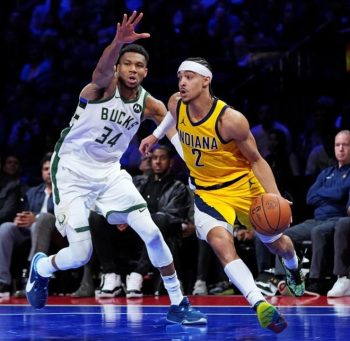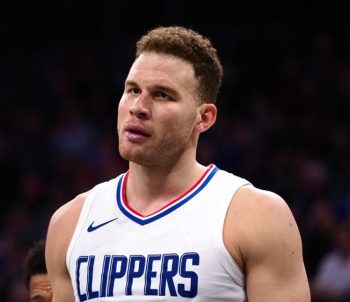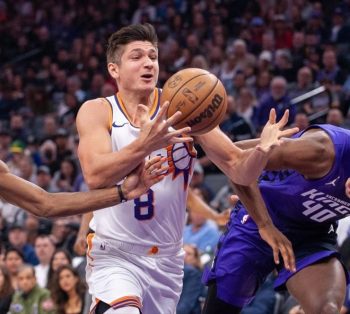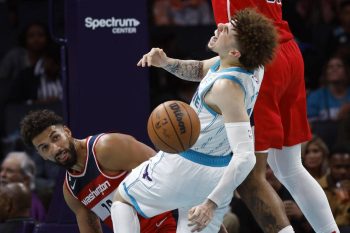NBA
NBA PM: There’s More to Basketball Than Rings

Every time some flavor of the month blowhard talk radio host spews a few minutes of nonsense about participation trophies in youth sports, it invokes conversations about what sports are really meant for. Is winning all that matters, or are there other lessons to impart as well? In other words, are we giving kids a fun, active, social outlet that can help them learn rules and fair play, or are we getting started early on instilling the cutthroat approach they’ll need to make it in this supposed dog-eat-dog world?
Like most debates in our country these days, these become polarized quickly – you’re either on one side or the other, with no in-between. But for those who foolishly assume a moderate viewpoint is still acceptable, it begs the question: Why can’t the answer be some of both? Why can’t kids learn responsibility and camaraderie while simultaneously honing competitive instincts for a future that indeed will likely become competitive at some point?
Now take the concept, and apply it to a similar group: The NBA’s incessant “ringz” crowd.
Raised by Michael Jordan and fostered into adulthood by Kobe Bryant, many NBA circles’ collective obsession with a title-or-bust mentality has only grown stronger in recent years. On its face, it makes sense: The primary goal of all 30 NBA teams is to win the championship every year.
As the practical applications of that singular outlook have been stretched further and further with each year, though, they start to look a little asinine. Tanking was at first just a whisper, then a thing, then a problem, and now an epidemic. Former players are often pretty hardheaded with “back in my day” proclamations, but you can understand their confusion in waking up to a league where suddenly, being dead last was easily preferred over finishing in the middle of the pack. That’s a whole other kind of participation trophy.
Within this postseason, the noise is slightly different. The Warriors and Cavs have stormed through their respective conferences, and hopes of a competitive clash between the two have been all but extinguished. And with the Dubs sporting a collection of in-their-prime talent the league has never seen on one roster, concerns regarding the entertainment level the NBA will be capable of providing over the next half-decade are reaching a fever pitch.
Once again, we see two sides of a polarizing argument: Those who remind us coldly that the league has been this way for nearly its entire history, with very few teams realistically capable of winning each year and relatively little parity compared to other team sports; on the other side, those who see this as an entirely different, more serious problem that can’t be compared to the LeBron/Wade HEAT, the Garnett/Pierce/Allen Celtics or any other ostensible Super Team.
And once again, the answer is in the middle. Parity has indeed long been a very different thing in the NBA than in leagues like the NFL or NHL; it’s an accepted part of being an NBA fan, really. That latter party is also absolutely right: This is not the same thing as the mid-2010s HEAT or any other manufactured behemoth, and attempting to end the conversation there is reductive and ignorant of pretty simple context. Great teams can occupy different levels of greatness, believe it or not.
What both sides miss as they shout into the abyss, however, is this: There’s more to basketball than rings.
As these Warriors lead the charge that’s got everyone so worked up, it’s ironic that they’re also easily the best, freshest example of the flaw in the “title or nothing” mentality. Ringz Nation is the very reason Golden State’s 73-win regular season last year – one of the most grueling, demanding and remarkable long-term feats accomplished in league history – has been reduced to nothing but a punch line to capture their failure. This whole narrative might never have existed if one Kyrie Irving shot fell a couple inches to the left and rimmed out; shouldn’t that fact call its entire legitimacy into question?
It should, and the same should apply to a nearly endless list of sports accomplishments through history. Given the situation the franchise was in before it began, how could anyone look at the Grit-N-Grind era in Memphis and view it as anything but a success? How many people do you know who consider Jerry Sloan, author of over 1,000 NBA wins and on many folks’ pantheon of NBA coaches, a failure based on his inability to grab a ring?
Even people who weren’t alive while it happened know about the Miracle on Ice at the 1980 Olympics, but fewer know that the United States’ miraculous upset over the Soviets was actually in a strangely formatted semifinal, not the final. Would dethroning the greatest power international ice hockey had ever seen – and doing it under the looming shadow of the Cold War, no less – have been that much less impressive if the US had lost the final to Finland two days later? Of course not! A group of journeymen and college players went head to head with the best hockey team of their era, at the biggest tournament in the world, and beat them.
Apart from the logic of it all, think of the way rings obsession naturally deforms fandom. Look at a guy like J.R. Smith, who has in many ways transformed his image while playing a vital role in Cleveland’s success – but you’d think the guy pulled a Joakim Noah based on the way some Cavs fans have treated him just for a few bad games against maybe the best team of all time. Doesn’t it suck that fans are being reduced to this?
Also remember that from a practical standpoint, the 29 teams that don’t get a chip each year are here for much more than participation trophies. League ratings and income peak during the Finals, sure, but there’d be no league to speak of without 82 games per team and the rest of the postseason first. Are realistic fans of the Orlando Magic – a group that never had even a shred of hope for a ring this year – just supposed to hibernate each season until they’re finally a contender?
Through this lens, even the most pessimistic assessment of the league’s intrigue factor over the next few years is still enormously positive. We get to watch up-and-coming stars like Karl-Anthony Towns, Ben Simmons and Markelle Fultz come into their own; we get to see if young crews like the 76ers, Wolves, Suns and the ever-popular Lakers can take that next step. Can young, asset-heavy contenders in Boston and Utah find a way to disrupt the Cavs or Warriors, or do veteran groups like the Spurs and Rockets have some tricks left in their bags?
There’s absolutely nothing wrong with putting the championship ahead of every single one of these elements, possibly by a wide margin – in fact, it’s probably weird not to. Fans have a right to be disappointed at a potential lack of title intrigue on the horizon, even relative to the normal low-parity NBA.
But the two don’t have to be mutually exclusive. When you start thinking of the NBA’s participation trophies as context-heavy representations of tangible accomplishments rather than some strange mark of failure, you’re on the right track.











